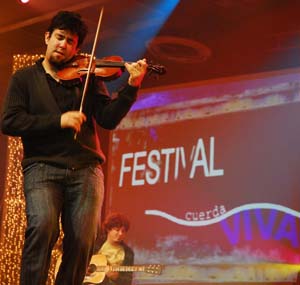13.6.4 Live Rope Festival.

The Cuerda Viva Festival, founded in 2002, has been around for almost a decade after its ninth edition. This event reflects, attracts, and inspires the fertile development of contemporary Cuban music, its practitioners, and followers.
With each of its annual editions, the Cuerda Viva Festival confirms its continued status as an indispensable space for stimulating and supporting the work of the island’s youngest alternative music artists.
Cuerda Viva is a television program that, since its inception, has been accompanied by maestro Víctor Casaus, director of the Pablo de la Torriente Brau Cultural Center. This makes the two venues closely related, even more so given that they work in the same artistic direction in terms of inspiring and supporting young Cuban talent.
Today, it has reached incredible maturity and amply demonstrates the mastery of its two main pillars, Ana Rabasa and Caridad Rojas, director and writer respectively, who affirm that it is possible to continue, maintain, and surpass the Cuban tradition of musical and variety shows, both in theater, in cabarets, and on television itself.
In addition to the aforementioned, the program has awarded memorable prizes and hosted important events. An example of this was the recognition given to teacher Cristy Dominguez on the occasion of the sixtieth anniversary of Cuban Television, an award that was also presented to Los Van Van for their 40th anniversary in 2010. Kelvis Ochoa, Isis Flores, and Fernando Bécquer were present at the tribute to Van Van.
The most recent Cuerda Viva 2011 Music Festival was held at PABEXPO and took place, as usual, during the month of March. It was sponsored by the Hermanos Saíz Association, the UJC (Citizens’ Union of Cuban Youth), the Office of the Historian of the City of Havana, and the Pablo de la Torriente Cultural Center. The event featured rap, rock, and DJ concerts, as well as exhibitions by visual artists. The festival concluded on Saturday with the awards gala for the nominees in the various categories.
The prize for the most popular artists in each category consisted of a diploma and trophy awarded by the program, as well as the recording of an album, jointly agreed upon by a jury of specialists, taking into account the professional endorsement of the groups and soloists.
Cuerda Viva, despite promoting a very alternative type of music within the larger Cuban social fabric, now has a fabulous audience that can fill theaters.








